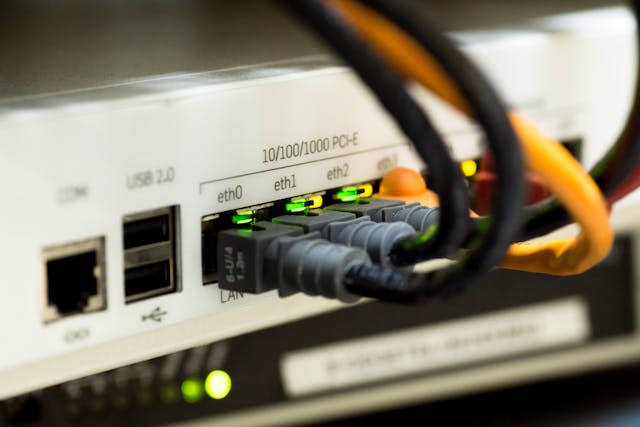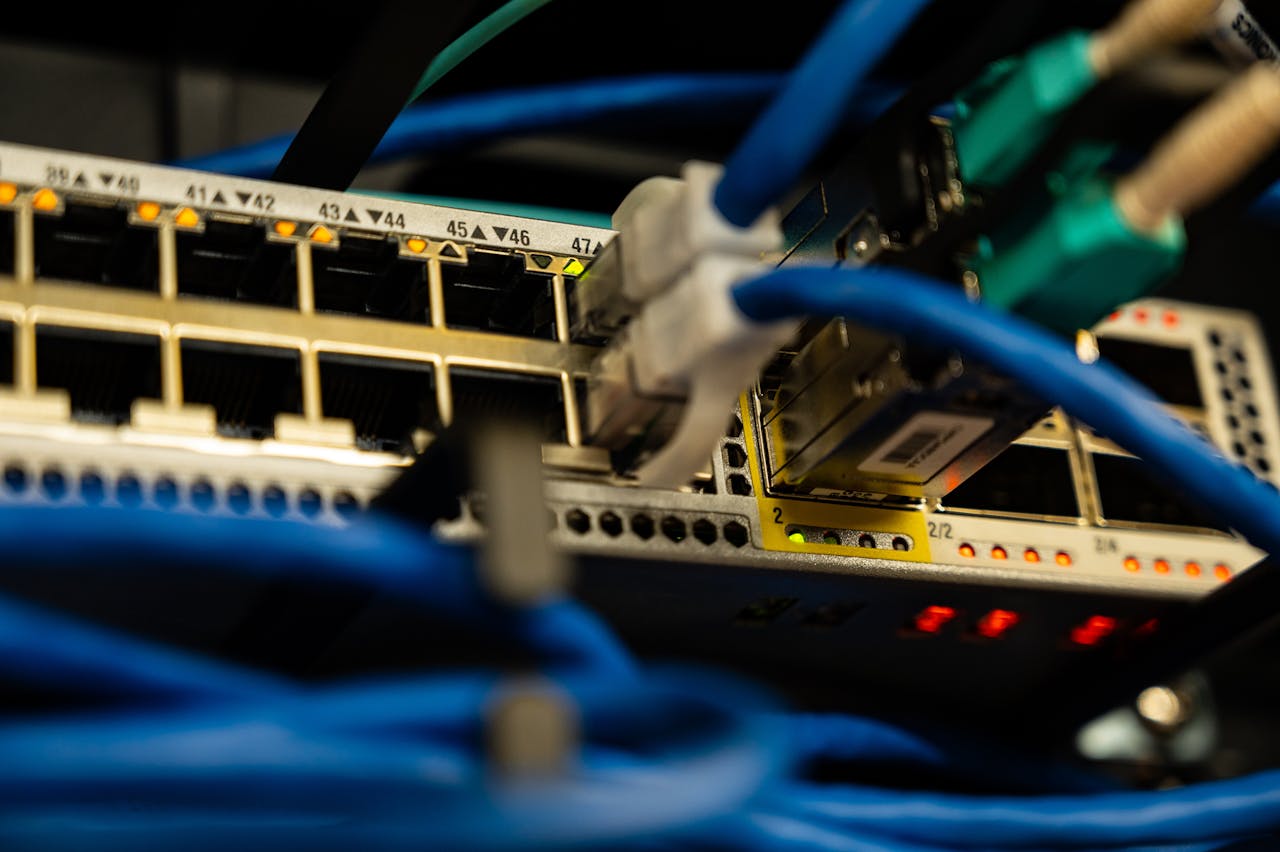In the fast-evolving landscape of telecommunications, where speed is king and connectivity reigns supreme, the terms “throughput” and “bandwidth” often create a whirlwind of confusion. As we stand on the brink of 6G technology—a leap set to redefine our digital experiences—understanding these concepts has never been more crucial. Imagine streaming ultra-high-definition content seamlessly while your smart home devices communicate flawlessly in real-time; this is the promise of 6G innovations! Join us as we dive deep into the intricate dance between throughput and bandwidth, exploring how these pivotal elements shape our future connectivity. Get ready to unravel complex tech jargon and discover what’s next for a world that demands lightning-fast communication at every turn.
What’s the Difference Between Bandwidth and Throughput?
At its core, bandwidth is like the width of a highway—it’s the maximum amount of data that can travel at once, akin to how many cars can fit in a lane. This measurement is typically used to express the data capacity of a network, often in megabits per second (Mbps) or gigabits per second (Gbps). Bandwidth is an essential factor in determining how much data your network can handle at any given moment, but it doesn’t tell you how efficiently that data moves from one point to another.
This is where the explanation of Throughput comes in. Throughput is the actual rate at which data is successfully transmitted from one device to another. It takes into account various real-world factors like network congestion, interference, and signal quality, which can all affect the efficiency of data transmission. In other words, throughput is a more accurate reflection of how fast your network is running, while bandwidth just tells you how much data it can carry.

Why Throughput Is Crucial in the 6G Era
With 6G on the horizon, we’re expecting data speeds that are exponentially faster than what we currently have with 5G. While bandwidth is still important, the real challenge—and opportunity—lies in maximizing throughput. In the world of 6G, the demand for faster and more reliable connectivity will be off the charts. We’re talking about seamless virtual and augmented reality experiences, ultra-high-definition video streaming, and even the real-time operation of autonomous vehicles. These applications need more than just high bandwidth—they require high throughput to function without glitches.
Throughput is also crucial for supporting the massive number of devices expected to be connected in the 6G ecosystem. According to estimates, there could be up to 100 billion devices connected to 6G networks by 2030, and it won’t just be smartphones. Everything from industrial machines to smart cities will rely on constant data exchange, meaning efficient throughput will be the key to making sure all of these devices communicate without slowing down the network.
The Role of Latency in Throughput
One of the major hurdles in achieving optimal throughput, especially in the 6G era, is latency. Latency refers to the time it takes for data to travel from one point to another, and it’s often referred to as “lag.” In a world where milliseconds matter—especially in applications like real-time remote surgery or autonomous driving—reducing latency will be essential for maximizing throughput. 6G networks will promise ultra-low latency, with goals of as low as 1 millisecond, which is a huge leap from the 10-30 milliseconds we see with 5G. This reduction in latency will directly impact throughput by allowing data to travel more efficiently and quickly across the network. Lower latency means that data can be processed and delivered faster, which improves the overall throughput of the network.
How Will 6G Networks Maximize Throughput?
In 6G, several advancements will be made to ensure that throughput reaches its full potential. One key area will be the integration of new technologies like AI and machine learning, which can help optimize network traffic in real-time. These technologies can identify and adjust for potential bottlenecks, helping data travel more efficiently through the network. Additionally, 6G will use advanced technologies such as terahertz (THz) frequencies to increase bandwidth and support ultra-high-speed connections. With more spectrum and more advanced technology, 6G will be able to increase both the theoretical bandwidth and the actual throughput, enabling the network to handle much more traffic without compromising speed or reliability.
Another major component will be the use of massive MIMO (multiple input, multiple output) antennas, which can send and receive large amounts of data simultaneously, improving the throughput in dense environments. This technology allows networks to handle multiple connections at once, which will be crucial for supporting the overwhelming number of connected devices in 6G.
The Future Is About Both Bandwidth and Throughput
While bandwidth is still important in the 6G era, throughput will be the true measure of network performance. As we push the boundaries of connectivity with technologies like virtual reality, AI, and autonomous systems, the ability to move data efficiently will become just as critical as the amount of data a network can carry. Throughput is all about making sure that data doesn’t just fit through the pipeline—it flows efficiently, without interruption, delay, or loss. In the coming years, 6G networks will need to balance both high bandwidth and high throughput to provide the seamless, real-time experiences that users are expecting. With advancements in AI, ultra-low latency, and new wireless technologies, the next generation of networks will push the limits of …





 Konica Minolta is renowned for its commitment to cutting-edge technology, and its copiers are no exception. Equipped with state-of-the-art imaging and printing technologies, Konica Minolta copiers deliver crisp, high-resolution prints with remarkable clarity. The integration of advanced features such as Simitri® HD toner technology ensures superior image quality, making these copiers a top choice for businesses that prioritize precision and professionalism in their documents.
Konica Minolta is renowned for its commitment to cutting-edge technology, and its copiers are no exception. Equipped with state-of-the-art imaging and printing technologies, Konica Minolta copiers deliver crisp, high-resolution prints with remarkable clarity. The integration of advanced features such as Simitri® HD toner technology ensures superior image quality, making these copiers a top choice for businesses that prioritize precision and professionalism in their documents.
 Network security is a critical aspect of any organization’s IT infrastructure. With cyber threats becoming increasingly sophisticated, it is imperative to have robust measures in place to protect sensitive data and prevent unauthorized access. One common network security issue is the risk of malware infections.
Network security is a critical aspect of any organization’s IT infrastructure. With cyber threats becoming increasingly sophisticated, it is imperative to have robust measures in place to protect sensitive data and prevent unauthorized access. One common network security issue is the risk of malware infections. When it comes to the smooth functioning of any business, having a well-designed and optimized IT infrastructure is crucial. This encompasses everything from the hardware and software systems in place to the overall network architecture. An effective IT infrastructure design ensures that all components work seamlessly together, maximizing efficiency and productivity.
When it comes to the smooth functioning of any business, having a well-designed and optimized IT infrastructure is crucial. This encompasses everything from the hardware and software systems in place to the overall network architecture. An effective IT infrastructure design ensures that all components work seamlessly together, maximizing efficiency and productivity.
 The first factor to consider when selecting a managed cloud provider is its reputation and experience. Working with a provider with a strong track record in the industry is essential. Look for testimonials and case studies from previous clients to gauge their experience with the provider. Also, ask about the provider’s experience with your industry or business model. A managed cloud provider with expertise in your industry may offer better-tailored solutions and insights.
The first factor to consider when selecting a managed cloud provider is its reputation and experience. Working with a provider with a strong track record in the industry is essential. Look for testimonials and case studies from previous clients to gauge their experience with the provider. Also, ask about the provider’s experience with your industry or business model. A managed cloud provider with expertise in your industry may offer better-tailored solutions and insights.
 One of the main advantages of telemedicine is that it can improve patient outcomes. When patients can
One of the main advantages of telemedicine is that it can improve patient outcomes. When patients can  The second benefit of telemedicine is that it can help to reduce relapse rates. When patients can get help when needed, they are less likely to relapse. According to a study, the relapse rate for patients who received treatment through telemedicine was only 19 percent. That’s compared to the relapse rate of 30 percent for those who didn’t receive treatment through telemedicine. This is a significant difference, and it shows that telemedicine can be an effective way to treat addiction.
The second benefit of telemedicine is that it can help to reduce relapse rates. When patients can get help when needed, they are less likely to relapse. According to a study, the relapse rate for patients who received treatment through telemedicine was only 19 percent. That’s compared to the relapse rate of 30 percent for those who didn’t receive treatment through telemedicine. This is a significant difference, and it shows that telemedicine can be an effective way to treat addiction. The third benefit of telemedicine is that it can help to relieve anxiety. Many people who suffer from addiction also suffer from anxiety. When they can get help through telemedicine, they can feel more relaxed and less anxious. Aside from that, they can also avoid the triggers that might cause them to relapse. Many people think that people who are addicted to drugs are weak. But the truth is, they are just like everyone else. They have their own struggles, and they need help to overcome them.
The third benefit of telemedicine is that it can help to relieve anxiety. Many people who suffer from addiction also suffer from anxiety. When they can get help through telemedicine, they can feel more relaxed and less anxious. Aside from that, they can also avoid the triggers that might cause them to relapse. Many people think that people who are addicted to drugs are weak. But the truth is, they are just like everyone else. They have their own struggles, and they need help to overcome them.
 If you want to get good at boxing, then you need to find a good trainer and gym. The same goes for becoming a good cryptocurrency trader. You need to find the right trading platform like Bitcoin Bank Breaker that will work best for you and your goals. There are many different options out there, so take some time to research and find the one that feels right.
If you want to get good at boxing, then you need to find a good trainer and gym. The same goes for becoming a good cryptocurrency trader. You need to find the right trading platform like Bitcoin Bank Breaker that will work best for you and your goals. There are many different options out there, so take some time to research and find the one that feels right. There is no such thing as a perfect trader. Everyone makes mistakes, and everyone has lost trades. What separates the good traders from the bad ones is how they handle their losses.
There is no such thing as a perfect trader. Everyone makes mistakes, and everyone has lost trades. What separates the good traders from the bad ones is how they handle their losses. Finally, one of the most important things to remember is that you should never stop learning. The world of cryptocurrency is constantly changing, and new things are continuously being developed. If you want to stay ahead of the curve, then you need to make sure that you are always learning. This can be done by reading books, taking courses, or even just following along with the news.
Finally, one of the most important things to remember is that you should never stop learning. The world of cryptocurrency is constantly changing, and new things are continuously being developed. If you want to stay ahead of the curve, then you need to make sure that you are always learning. This can be done by reading books, taking courses, or even just following along with the news.

 Some consoles come with additional accessories that can enhance your gaming experience. The PlayStation VR is an excellent example of this. It’s a headset that immerses you in the game by putting you in the virtual world. If you want to take your gaming to the next level, consider purchasing a console that has compatible accessories.
Some consoles come with additional accessories that can enhance your gaming experience. The PlayStation VR is an excellent example of this. It’s a headset that immerses you in the game by putting you in the virtual world. If you want to take your gaming to the next level, consider purchasing a console that has compatible accessories.
 People are reticent in nature because there are social ethics and how we are expected to behave a certain way in society. Naturally, with all of those inhibiting us from showing our true colors, we can’t get a clear grasp of what other people are thinking about us. Spy app technology helps improve our image because it gives us a bird’ eye view of what people are saying about us, whether it be good or bad. This information can help shape how we want to present ourselves to the world and ultimately make us better individuals.
People are reticent in nature because there are social ethics and how we are expected to behave a certain way in society. Naturally, with all of those inhibiting us from showing our true colors, we can’t get a clear grasp of what other people are thinking about us. Spy app technology helps improve our image because it gives us a bird’ eye view of what people are saying about us, whether it be good or bad. This information can help shape how we want to present ourselves to the world and ultimately make us better individuals. These are just a few examples of how spy app technology can benefit you in your day-to-day life. As you can see, there are many reasons why you should consider using one – whether it’s to improve your image, protect your children, or simply increase productivity. So what are you waiting for? Get started today.…
These are just a few examples of how spy app technology can benefit you in your day-to-day life. As you can see, there are many reasons why you should consider using one – whether it’s to improve your image, protect your children, or simply increase productivity. So what are you waiting for? Get started today.…
 As mentioned earlier in the text, the gaming industry is not what it used to be in the past. It is now worth a lot of money, and games are also different. People used to play low-quality computer games that required bulky arcade machines, but this has changed.
As mentioned earlier in the text, the gaming industry is not what it used to be in the past. It is now worth a lot of money, and games are also different. People used to play low-quality computer games that required bulky arcade machines, but this has changed. The next important tip you need to consider when selecting a computer game is the price. It is crucial to note that most computer games have to be bought with money before playing, even if they are online-based. It will be wise to choose a game you can afford.
The next important tip you need to consider when selecting a computer game is the price. It is crucial to note that most computer games have to be bought with money before playing, even if they are online-based. It will be wise to choose a game you can afford.



 Being a great driver needs you to have skills and knowledge about the road. There are online companies that can offer online driving lessons. It also requires discipline and self-control; without it, you will be a mess down the long and winding road. Anyway, before you can even drive, you will still need to pass specific tests and exams that will examine your skills and knowledge on driving.
Being a great driver needs you to have skills and knowledge about the road. There are online companies that can offer online driving lessons. It also requires discipline and self-control; without it, you will be a mess down the long and winding road. Anyway, before you can even drive, you will still need to pass specific tests and exams that will examine your skills and knowledge on driving. There are many differences between how manufacturers have designed your vehicle. The usual design nowadays has been very ergocentric where all the buttons are facing the driver mostly. Being familiar with the buttons, switches and knobs is a must for the smoother driving experience.
There are many differences between how manufacturers have designed your vehicle. The usual design nowadays has been very ergocentric where all the buttons are facing the driver mostly. Being familiar with the buttons, switches and knobs is a must for the smoother driving experience.
 The Divi and Avada WordPress themes are both multi-purpose themes that make blogging a sweet piece of cake. They allow you to make a fully-fledged blog from a simple pre-made layout. They are both great themes which are easy to install and use. Nonetheless, there are subtle differences between them. For example, when using the Avada theme, you need to register and verify your registration before you can access premium features. There is the good side of this, but arguably, it wastes the user’s time. You do not need to register to access premium features when you are using the Divi theme. You can apply the Divi theme on more than one blog without registering or paying an extra dime.
The Divi and Avada WordPress themes are both multi-purpose themes that make blogging a sweet piece of cake. They allow you to make a fully-fledged blog from a simple pre-made layout. They are both great themes which are easy to install and use. Nonetheless, there are subtle differences between them. For example, when using the Avada theme, you need to register and verify your registration before you can access premium features. There is the good side of this, but arguably, it wastes the user’s time. You do not need to register to access premium features when you are using the Divi theme. You can apply the Divi theme on more than one blog without registering or paying an extra dime. Beauty lies in the eyes of the beholder, but when comparing the aesthetic quality of both the Avada and Divi themes, the Avada would carry the day. Its great graphics, fonts, and colors are likely to attract readers to your blog and keep them coming back for more. That is if my opinion counts.
Beauty lies in the eyes of the beholder, but when comparing the aesthetic quality of both the Avada and Divi themes, the Avada would carry the day. Its great graphics, fonts, and colors are likely to attract readers to your blog and keep them coming back for more. That is if my opinion counts.
 Thankfully technology keeps getting better and better, and parents can order video monitors for their infants so that they really a sense of safety when having to the leave the sight of their child. Some come equipped with several cameras that ensure the safety of an infant as well. This gives the parents an even greater sense of security when leaving their infant alone. Motorola is a popular brand that people trust to buy cameras for their babies. Sound, cameras and other features are equipped to help the parent feel safe when they have to leave the room and leave their baby all alone.
Thankfully technology keeps getting better and better, and parents can order video monitors for their infants so that they really a sense of safety when having to the leave the sight of their child. Some come equipped with several cameras that ensure the safety of an infant as well. This gives the parents an even greater sense of security when leaving their infant alone. Motorola is a popular brand that people trust to buy cameras for their babies. Sound, cameras and other features are equipped to help the parent feel safe when they have to leave the room and leave their baby all alone. when it comes to its battery life, sensor and HD camera. It has a very easy set up which makes it easier for the householder to use overall. Regarding the motion detection, the householder can choose when they want to have it on or off. This is great because it allows for great flexibility and usage for the parents. It allows them to feel more in control of their baby’s safety and protection. This is very important to the the parents.…
when it comes to its battery life, sensor and HD camera. It has a very easy set up which makes it easier for the householder to use overall. Regarding the motion detection, the householder can choose when they want to have it on or off. This is great because it allows for great flexibility and usage for the parents. It allows them to feel more in control of their baby’s safety and protection. This is very important to the the parents.…